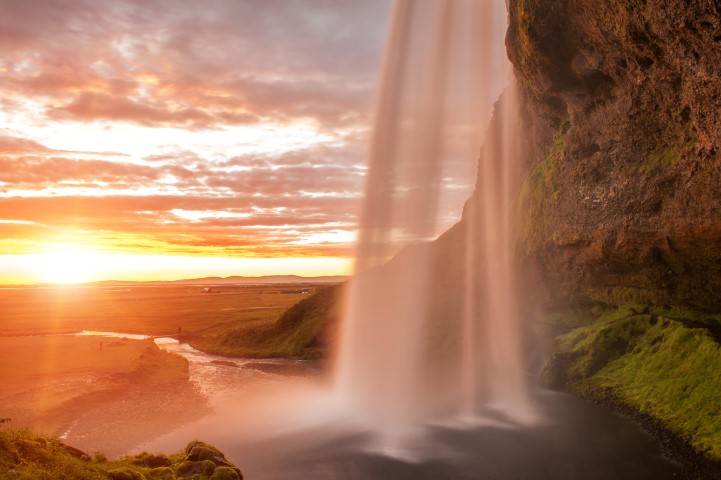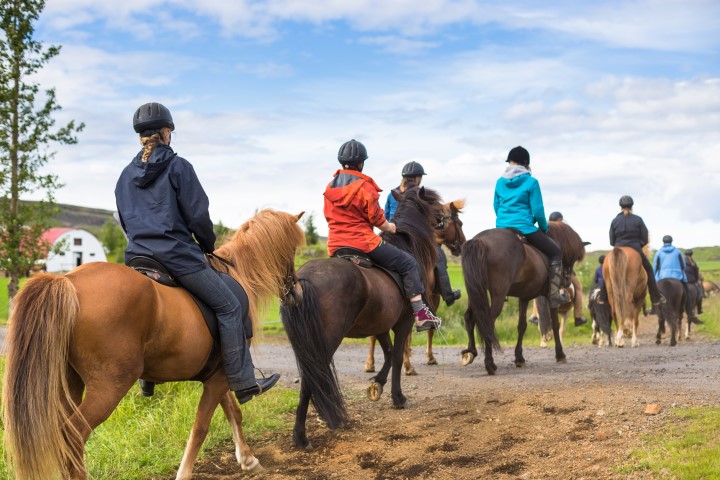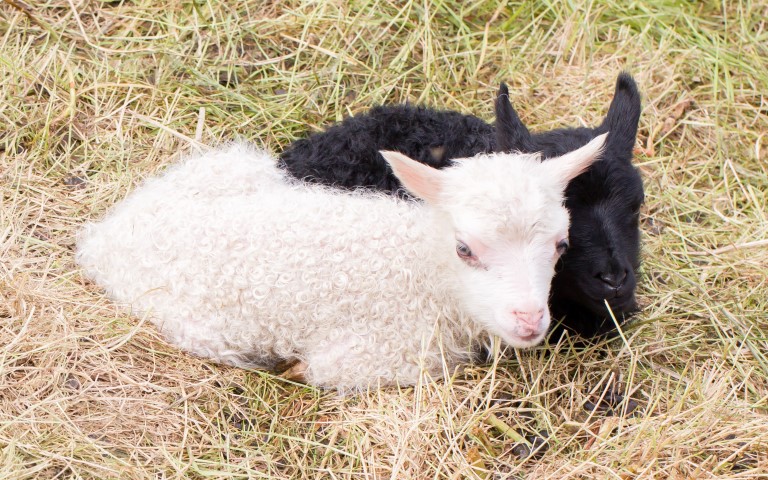Iceland has, in recent years, seen a great boom in tourism and for good reason. This breathtaking country is fast becoming one of the most Insta enviable destinations in the world and travellers are determined to have their own picturesque Iceland affair. Iceland is your perfect winter destination – as the name implies – and the country is famous for majestic glaciers and snow-covered lava fields, for the Northern Lights and blue-lit ice caves. But visit in the summer and it can feel like a totally different country. Visiting Iceland is absolutely amazing all year round, but every season has its own charm. Icelandic summers of endless light welcome you to experience the magic of eternal sunshine. This is the brightest and most colourful season in Iceland and during summer almost anything is possible. Summer is prime time for hiking and pool hopping between natural hot springs. It‘s also the only season you can access the awe-inspiring Highlands. This is when we have longer days, warmer nights and an endless list of activities that await you all around the country. We are genuinely excited about summer, so that is why we want to give you our best tips on what to do in Iceland during the season. Just remember that once you visit the Land of Fire and Ice it will take hold of your heart and you will have to come back again and again. And then once more.
These are our reasons for why you should visit Iceland in the summer.
1. Midnight Sun

In the summer months, much of Iceland sees around 21 hours of daylight. The sun rises at 3ap and sets at 12 am. The long days and warm nights make it easier to stay up late, see more and do more! If you are visiting during the summer months be prepared for some awe-inspiring displays, where the skies blaze in super-shades of pink and gold that intensify in those few magic moments before dusk. Imagine sitting in a narrow fjord and watching the sun merely touch the surface of the water before rising up again – an experience words can not do justice. Check out our article about how, shere, and when to see the midnight sun in Iceland.
2. Puffins

Iceland is home to one of the world‘s largest puffin colonies and these cute orange-beaked birds are certainly worth looking out for. The puffins are fans of the sunshine, which means they don‘t stick around for winter. Catch them between April and August flying around the coastal areas or islands like the Westman Islands.
3. The Highlands: for a rugged adventure

There are some parts of Iceland‘s interior that you really can‘t reach in winter because the road conditions are just too bad. Come July and you can access all areas. If you are a keen hiker, a nature lover, or just want to experience something mind-blowing, you shouldn't miss the chance to explore the Icelandic Highlands. The stark landscape can seem almost otherworldly and is certainly worth the detour. Just remember to check road and weather conditions before heading into the Highlands and note that you will need a 4x4 vehicle.
4. Festivals
Summer is the festival season in Iceland and not a week goes by without some kind of village festival going on. Icelanders have a strong tradition of celebrating summer and gathering for a long weekend of drinking, dancing and camping with family and friends. Some of our favourite festivals are the Lobster Festival in Höfn to Danish Days in Stykkishólmur, Secret Solstice in Reykjavík, The Great Fish Day in Dalvík, Reykjavík Pride and Culture Night, Bræðslan in East Iceland and Þjóðhátíð in the Westman Islands.
5. The Westfjords: Reach the unreachable
Summer is a time when you can escape the crowds and explore the more remote areas of the country, such as the Westfjords. This is when the sometimes craggy roads are easier to navigate and villages spring to life. The Westfjords offer some awe-inspiring experiences such as a hike to Hornstrandir, Látrabjarg Cliff, Dynjandi Waterfall and just the absolute silence and serenity of the deep fjords.
6. Hiking

Iceland is a paradise for hikers and summer is the best time to explore the country on foot. The opportunities are endless for beginners and avid hikers alike. Every region in Iceland offers hiking trails for you to explore a waterfall, a mountain, a beach or a volcano but classic trails to consider if you enjoy some serious hiking include the Laugavegur trail from Landmannalaugar to Þórsmörk, the Fimmvörðuháls hike between Skógar and Þórsmörk and Hornstrandir in the Westfjords. Just remember to put on some hiking boots with good ankle support.
7. Road-tripping
Drive around, explore and be exposed to Icelandic nature. With quiet, well-maintained roads and breathtaking scenery, Iceland is prime road trip territory. You can work your own timetable, stopping wherever you fancy, and you get to see parts of the country you otherwise wouldn‘t. The most classic road trip takes you along the Ring Road all around the island, so you will have the chance to explore the different regions and visit all the highlights of the country. The plus side to doing this in summer is the massive safety factor. Snow free roads, clear screens, lots of daylight and great accessibility to all the attractions.
8. Camping
How wonderful does it sound to make the most of your Iceland experience and not only see the most beautiful attractions, but also sleep right in the action and enjoy the natural beauty all day and into the morning? Camping in Iceland gives you a unique perspective on the nature around you. From your tent you will hear the rustling of grass being moved by the breeze, you will hear the roaring waterfall just outside your tent and you whiff the scent of fresh manure being used to fertilise a nearby field. Just make sure to camp your tent or van at designated camping areas.
9. Glacier activities: snow is still around

You may think that glacier activities are a winter thing in Iceland. But you are wrong. During summer you will have the same snowy conditions and you will be able to go glacier hiking, ice climbing or snowmobiling on a glacier. The difference is, during summer the weather is likely to be more warm, sunny and clear! Just make sure you always visit a glacier with a guide or on organised tours.
10. Pool hopping in natural springs
A big part of your Icelandic adventure is visiting one or more geothermal baths and natural hot springs. A visit to the Blue Lagoon is at the top of most visitor‘s agendas, but there are so many other interesting pools to discover. You have the Mývatn Nature Baths, the Secret Lagoon and Laugarvatn Fontana plus all the rustic and raw natural hot pools and springs.While the water will be warm no matter the month, the benefit to a summertime visit is that all the pools will be accessible and you will not have to strip naked in the snow and freezing cold weather (you know, because the natural pools usually don‘t have any changing facilities). Check out our article about the Top 20 Hot Springs and Swimming Pools in Iceland.
11. Horse-back-riding

The Icelandic horse is rather small and many think it is a pony, but it is actually a proper horse. Even though they are small, Icelandic horses live long, are very strong and hardy and play an important role in traditional farmwork. The best thing about the Icelandic horse is that it has such a wonderful and loving personality and a gentle demeanor. Exploring Iceland's nature from the back of those gentle beings is nothing short of amazing. You will find horse rentals all around the country and you‘ll will find everything from 1-hour introduction tour up to multi-day riding tours for those more advanced.
12. Summer: the season of cuteness

In Iceland you‘ll be treated to views of beautiful farm animals, roaming free and enjoying the summer months. Sometimes sheep take their freedom too literally and take their roaming to the road. Hey Iceland even offers some tours where you can take part in farm duties on an Icelandic farm, taking care of the animals. Please be careful when you see farm animals close to the road and please don‘t stop just anywhere on the road to take pictures of those pretty things.
13. Warmer days
The increase in temperature is an obvious reason why it might be better to visit Iceland in the summertime. To be honest, it never gets hot, but we do occasionally see temperatures dancing around 20°C. The whole Iceland experience is just so much better when you don‘t have a runny nose and icicles hanging on your eyelids. That being said, you can still expect experiencing all sorts of weather within one day, so bring layers of clothes and do your research on what to wear on a trip to Iceland.
Final tips and advice
It is easy to get carried away with the eternal sunshine and amazingness of Icelandic summer, but please make sure to get some rest too and travel slowly. It‘s more fun and you will get so much more out of your trip to Iceland.
Maybe the conclusion of this article should be that if you want to come to Iceland for hiking, road tripping, hanging with puffins and enjoying the morning sun, then summer is your season. You can still explore the glaciers and the whales are swimming around the island all year round. The roads are more accessible, nature is in bloom, the weather is mild, travelling around is easy and you‘ll have the perfect light for your pictures at all hours. The only downside, there will be more people exploring the same things you are so you can expect some crowds at the most popular attractions.
If you feel that summer is not your thing and you would like a different kind of experience then you might be interested in our article about why you should visit Iceland in the winter.